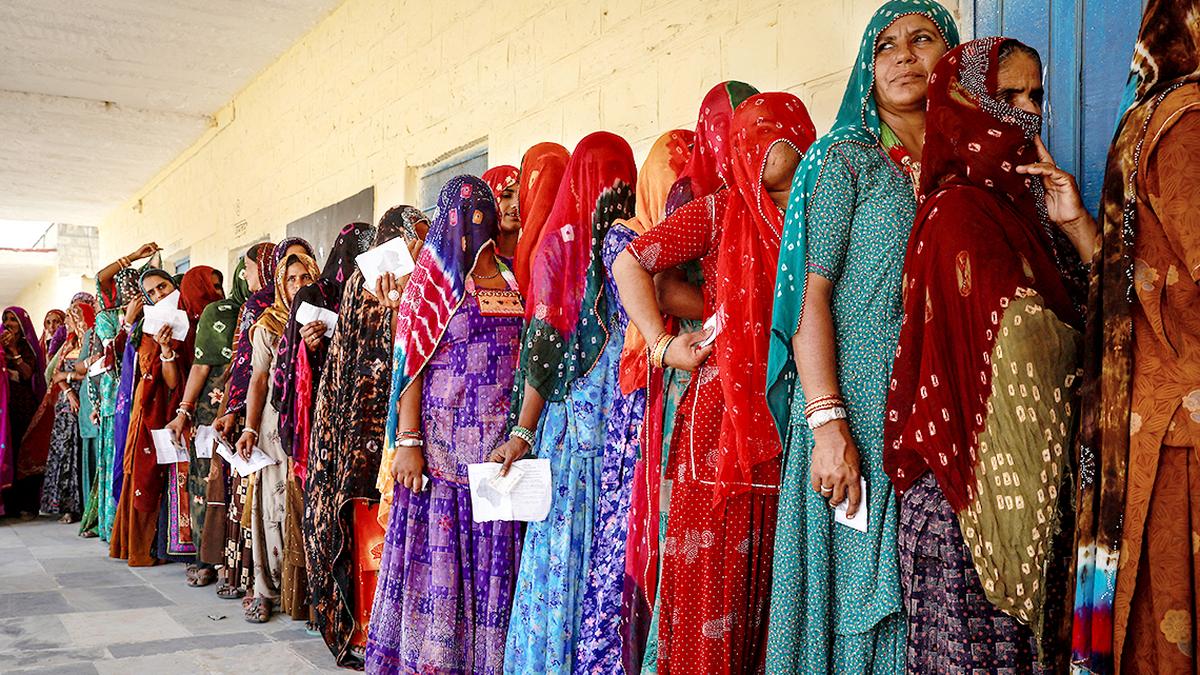On Sunday, Prime Minister Narendra Modi made a series of controversial statements at a public meeting in Rajasthan. He referred to Muslims in India as “those who have a large number of children” and claimed that former Prime Minister Manmohan Singh said (in 2006) “Muslims had the first claim on the country’s resources”. He alleged that the 2024 Congress manifesto proposes to distribute people’s wealth among Muslims if the party is elected to power. He made this claim by combining sections in the manifesto, which addresses wealth inequality, and connecting those points to the former Prime Minister’s speech in 2006.
Also Read: 2024 Lok Sabha elections LIVE updates - April 23
A fact-check using government data shows that the claim that Muslims give birth to more children is erroneous.
Table 1 | The table shows the total fertility rates (TFR) of women from various religious groups. The fertility rate is the average number of children a woman is expected to have in her lifetime. A rate of 2.1 (the ‘replacement level’) means that the population is stable.
Table appears incomplete? Click to remove AMP mode
As the table shows, the fertility rate of Muslims along with the fertility rates of all other religious groups have been drastically declining over the years. As per 2019-21 data, the fertility rate of Muslims was 2.36, much closer to the replacement level. Also, the gap between the fertility levels of Hindu and Muslim women (B-A in table) has sharply reduced from 0.81 to 0.42 in the two decades. This trend holds true even among the most populous States (Table 2).
Table 2 | The table shows the TFR of Hindu and Muslim women for the five most populous States in two periods.
Excerpts from a government press release dated December 6, 2006, quoted Dr. Singh as follows: “I believe our collective priorities are clear. Agriculture, irrigation and water resources, health, education…along with programmes for the upliftment of SC/STs, other backward classes, minorities and women and children...We will have to devise innovative plans to ensure that minorities, particularly the Muslim minority, are empowered to share equitably in the fruits of development. They must have the first claim on resources...” While Dr. Singh’s statement was aimed at all vulnerable sections of society, his emphasis on Muslims was singled out by Mr. Modi.
Table 3 | The table shows the share of females and males across religious groups who did not attend school/complete 12 years of schooling.
Dr. Singh’s worry about all vulnerable sections, especially Muslims, is backed by data that show that Muslims lagged behind other religious groups on several indicators when he made these remarks. Table 3 shows that across sexes, the share of Muslims who did not go to school was much higher than other religious groups in 2005-06. While a higher share of Muslims continued not to go to school even in 2019-21, the gap narrowed. Similarly, the share of Muslims who completed 12 years of schooling was the lowest among all the religious groups in 2005-06 and continued to be so in 2019-21.
Also read: Recourse to hate: On the Prime Minister’s speech in Rajasthan
Table 4 | The table shows the neonatal mortality rate (NMR) and under-five mortality rate (U5MR) among Hindus and Muslims in 1998-99, 2005-06 and 2019-21. NMR refers to the number of deaths during the first month of life per 1,000 live births. The lower the figure, the better.
The decrease in NMR among Hindus has been much greater than among Muslims. In 1998-99, the NMR among urban Hindus was 36.6, which was much higher than the 25.9 among urban Muslims. The gap narrowed in 2005-06 to 30.9 among urban Hindus and 21.6 among urban Muslims. In 2019-21, the NMR of urban Hindus further reduced to 18.4, which was lower than the 18.7 recorded among urban Muslims. A higher drop in NMR among the Hindu population when compared with the Muslim population was also seen in rural areas. An analysis of U5MR also shows a similar trend.
With inputs from Rachita Tanya Rabboni and Sruthi B.
Source: National Family Health Surveys
Listen to our Data Podcast: Awareness or affordability: Why are cervical cancer screening levels low among Indian women? | Data Point podcast

 2 weeks ago
105
2 weeks ago
105




